J-Stars Victory Vs+ (PlayStation 4) Review
By Drew Hurley  23.07.2015
23.07.2015
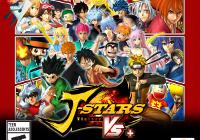
J-Stars Victory Vs+ is an expanded version of J-Stars Victory Vs., which was released only in Japan for PlayStation 3 and Vita in March 2014. Developer Spike Chunsoft managed to overcome the crazy amount of licencing issues and bring this anime fan's dream to the West with Bandai Namco. Released to coincide with the 45th anniversary of the Japanese magazine Shonen Jump, it was a party-style fighter that allowed fans to create some dream matches from a roster made up of 39 playable characters from 24 different Shonen Jump series, along with 13 more support characters. This latest incarnation brings all of the features of the original (powered up for the new generation of consoles) and includes some new features and extras, too.
It's surprising to see J-Stars reach the West. Although the culture of anime and manga has undergone numerous booms over the last ten years or so, there are still many characters that will be unknown to the majority of the audience. In fact, with a roster this size, even the most hardcore Otaku fans will find it hard to identify them all. Thankfully, the story mode primarily focuses on some of the most well-known characters from some of the biggest franchises, like Luffy from One Piece, Naruto, Ichigo from Bleach, and Toriko. Some of the big sales figures from Bandai Namco's recent titles have already proven that these franchises have audiences outside Japan. The Naruto Ultimate Ninja Storm series is going from strength to strength with the latest iteration due out soon (and looking very promising), and the Musou-style One Piece Pirate Warriors series has had sales enough to justify each iteration getting a Western release.
J-Stars is fundamentally a fighter, though it's more in the style and genre of Super Smash Bros. than that of Tekken or Street Fighter. It's a fun party game for fans of the source material to enjoy, with too many broken aspects and balance issues to garner any interest from the hardcore fighter crowd. From a considerable roster, players can make teams of up to three fighters (along with support characters) to battle across fully destructible 3D areas made up of some iconic landscapes from numerous anime and manga franchises. Each team has a set amount of KOs to collect, and winning means achieving enough KOs to max out the win gauge before the enemy does. The controls are simple to pick up and easily mastered. Combat uses standard quick or strong attacks and a stamina bar for specials, the usual blocks and guard breaks, support characters who can dive in to perform a special ability (then disappear), and of course dynamic massive ultimate attacks. There's a Voltage Meter at the top of the screen that fills as opponents take damage, and when full, activates Victory Burst mode, in which characters can unleash massive attacks.
Different modes consist of a campaign called J-Adventure, challenges in the form of Victory Road, Free Battle, Online Battle, and a brand new Arcade Mode, which was specifically added because of the Western release. Series producer Koji Nakamura commented about how Western games have more of a focus on replay value, and the original was certainly lacking that. Arcade Mode allows for quick pick up and put down play, though certainly not from the get-go; players will have to invest serious time to unlock characters before firing into it, or just play with the highly limited starting roster. This mode has eight groups of six set battles to work through, while special bonuses and extra battles can appear to expand lifespan and replay-ability, making it worthwhile to go back and try to achieve better times and higher scores.
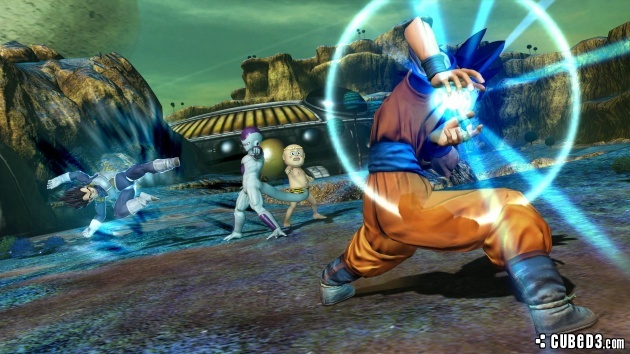
While this new release has Arcade Mode to expand its lifespan, J-Adventure is still its biggest aspect. It features four paths to play through, each led by the lead of a different highly popular series. The Dynamic Arc is headed up by One Piece's Luffy, the Hope Arc stars Naruto, the Pursuit Arc features Bleach's Ichigo Kurosaki, and the Investigation Arc centres around the latest big Shonen series, Toriko. Each of these arcs gives the starting character a boat and then throws them into a world that shares locals and denizens from all of the other Shonen Jump series. Protagonists must gather a team of characters from other titles and travel the world to take part in a typical Shonen battle tournament. Besides exploring the overworld, completing side quests will level up the characters and dole out J-Points that can be used to purchase additional characters for the other modes. This method of unlocking is not very well designed. Compared to most fighters, where a decent starting roster is later expanded, J-Stars starts with only a handful of characters initially available. J-Points can also be used to purchase support characters and special consumable items for use in J-Adventure mode, as well as J-Coins, which are used for a set of collectable cards. These cards are an interesting feature; they can give power-ups to specific characters, and decks can be made and equipped based on which characters are being used.
J-Adventure mode also offers a Battle Guide in the first few missions as a series of tutorials on how to move, lock on, perform each of the attacks, etc. It has lots of ups and downs, with a ton of fanservice throughout, which is a real joy for anime and manga fans. Seeing some of the interactions between various characters and how they deal with situations during the story is great, and filled with some genuinely funny moments. Whether it's watching Gintama break the fourth wall and make meta jokes or just experiencing how characters who would never be in a crossover act together; it's fanfiction, but it's done well.
The negative aspects of the story mode are quite fitting considering the source material. Side quests are not unique to an arc, and are instead duplicated in all four, so running through each side quest again makes subsequent arcs seem to drag. It would have been better to split the existing side quests across the arcs equally, making each one shorter but truly original. Instead arcs feel like they've been artificially expanded with these "filler" quests, and "fillers" are a complaint many anime fans will be very familiar with. Other major complaints carried over from the source material include censorship and translation woes. Bandai Namco have taken criticism on a number of their releases in this category, from the appallingly bad translations that resulted in broken nonsensical English in their recent Sword Art Online: Hollow Fragment to simple mistranslations in their recent Naruto, Saint Saiya, and Jojo titles. It's not quite so prevalent here, however there are still moments which will make those who understand Japanese raise an eyebrow for simple mistakes or flat out completely different things being said.
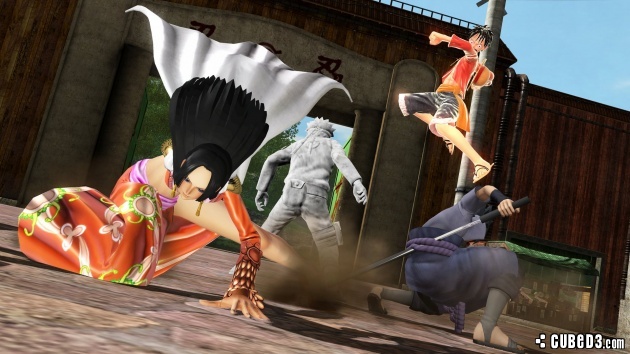
The challenge mode Victory Road features a series of 12 famous anime locations, each of which is made up of four to five stages, for a total of 123. It's a good amount to be entertaining without feeling bloated. These stages have set challenges to achieve, and completing them rewards more J-Points. Challenges range from simple acts (like "Perform 5 Jump Attacks") to things as complex as ending the fight with an ultimate attack or within a set time limit. There are slight issues with Victory Road. Firstly, none of the challenges, even on the final stages, are particularly difficult to achieve. Each stage that has a few individual challenges can be completed independently, and players will likely tear through them. Secondly, the challenges for the stage are shown before the level starts, but can't be checked in-game, which is just general poor design. It also acts more like a campaign than the usual type of challenge modes found in other games, and feels very lacking when compared to things like Mortal Kombat's stellar Challenge Tower.
The Online Battle and Free Battle modes are generic and self-explanatory. They both serve their purpose and are decent enough, although it's a shame there's no cross play, against either the original J-Stars or the other platforms. There's also a gallery that features replays of battles, as well as a Character Info section with a few 3D models and voice snippets of each character, along with a short synopsis of them and the series they originally come from. It's a great addition for those who want to find out more about the source material.
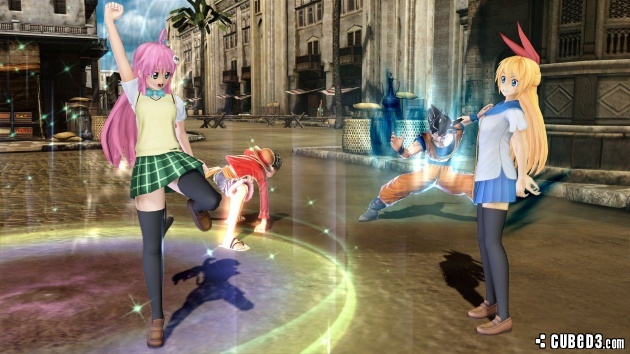
The original title suffered from a common complaint of non-competitive level fighters in that some characters were horrendously overpowered. This was meant to be addressed in this version, with characters rebalanced across the board, but if any changes truly were made, it's hardly noticeable in the final product. That's not the only disappointing aspect that transitioned from the old version to the new; while it plays at an upscaled 1080p, it hasn't been brought up to 60fps, instead remaining at 30. There are numerous issues with some core aspects, and navigating around most of the menus feels like a chore. For example, the character select splits the roster over seven pages, each containing eight characters; cycling across these is an unnecessary step when compared to most fighters, which simply have a massive grid of characters. If it isn't broken, why attempt to fix it? Small poor design decisions like this all add up to impact J-Stars's overall presentation.
The poor design is also part of the combat. While characters' opening introductions and fantastic ultimate attacks will bring a smile to a fan's face, not having the option to skip them is criminal. Similarly, during combat the action can feel delayed and slow. When an opponent is knocked down they are given a few seconds of invulnerability to recover, which lasts far too long and is highly abuse-able. The knocked-down animations have no quick recovery and there's no way to break out of most of the special moves or combos, which hampers the flow of combat, making it feel clunky at times.
Obviously one of the biggest (if not the biggest) strengths of J-Stars, and what will be the reason for most purchases, is the roster and the experience of seeing some amazing characters faithfully recreated. Each character is painstakingly designed to the finest degree, not just with appropriate movesets and abilities, but with the walk, the design and style, the transition from 2D to 3D, the voices, and the environments. Each of the characters feel different to play as and there are easter eggs and winks scattered everywhere, from the characters exchanging different opening taunts and retorts depending on the pairings, to the dialogue of J-Adventure mode. Many of the featured series have solid fanbases that will be overjoyed to see their favourite characters recreated here, not to mention the possibility of some of the match ups. Facing off Kenshin and Ichigo or Kenshiro and Oda with Baby Beel is literally a dream come true for so many fans of anime and manga that it combats much that is fundamentally wrong with the gameplay.
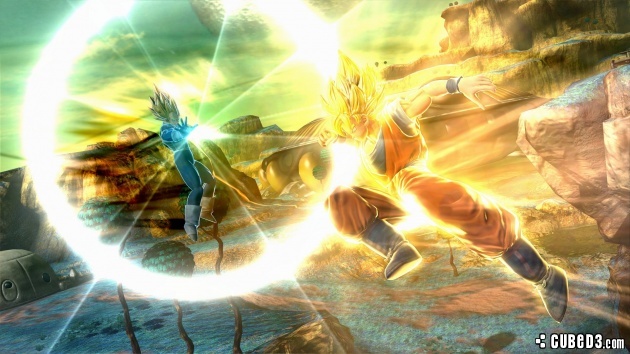
Cubed3 Rating
Good
J-Stars Victory Vs+ is an exceedingly hard game to effectively score. It's aimed at a very specific fanbase, and those not familiar with at least a few anime or manga series will find little to catch their interest here. The target audience will find fanservice through and through, and this will be an instant buy regardless of reviews or scores. For those on the fence it's worth the price for the experience alone, and to help support more of these titles being released outside of Japan. While J-Stars may be fundamentally flawed in many ways, it offers something many fans never imagined they would get to experience, and it has some truly great moments.

![]() 6/10
6/10
![]() 0
(0 Votes)
0
(0 Votes)
 Out now
Out now  Out now
Out now  Out now
Out now  Out now
Out now Comments
Comments are currently disabled

 Sign In
Sign In Game Details
Game Details Subscribe to this topic
Subscribe to this topic Features
Features





 Top
Top

